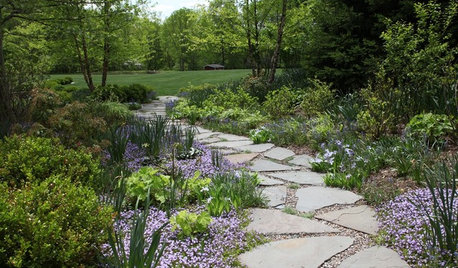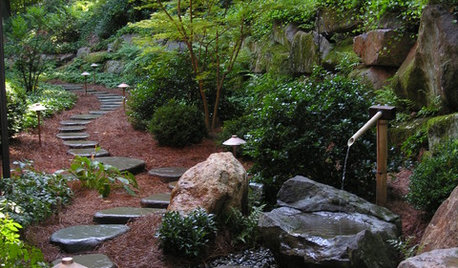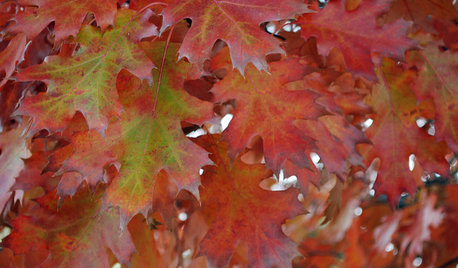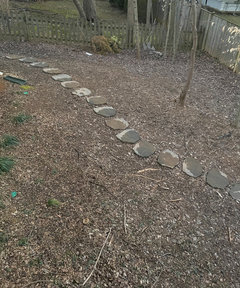Install grass sods on decomposed leaves & mulch
Sapphire
3 years ago
last modified: 3 years ago
Featured Answer
Sort by:Oldest
Comments (17)
User
3 years agoSapphire
3 years agolast modified: 3 years agoRelated Discussions
sod over leaves bad?
Comments (3)+1. Keep the compost going and then just sprinkle the finished product over the area once it has decomposed. Sods needs good soil contact to root properly....See MoreSod or Rubber Mulch
Comments (4)Your friend is right- rubber mulch is very low maintenance and will definitely repel cats. It may seem costly at first but if you think about it, it's a very worthwhile investment. Rubber mulch lasts for YEARS, so for the amount of times you would've replaced any other kind of surfacing, it's worth it. I love it, I think you will too! Here is a link that might be useful: rubberecycle...See MoreToro Mulch Mower spits grass/leaves out at the front right wheel?
Comments (30)While i never fixed mine i know it is the deflector shield that has an opening in it as i recall, only happens when I turn right . if you turn it over it becomes obvious. i had thought of bending up some metal and bolting it to the old piece to close it off. Really irritating when the grass is long. Raising the wheels does not fix it though it makes it easier to cut tall grass with the front cuttingless grass and the back finishing it off...See MoreUsing mulched leaves after I've put down wood mulch
Comments (5)I agree with The Virginian. I'm trying to replace some of my lawn with shrubs and flowers, so whenever I need a new area cleared, I lay down cardboard, then whatever organic material I can get my hands on. One of my neighbors gives me his grass clippings, so that usually goes on first. Last fall, I collected 30 bags of leaves one afternoon, and shredded that, then laid it down over the grass clippings. I've been having a ball all spring, watching various kinds of birds pick through it, looking for bugs. Besides eliminating the need to cut off the sod, by the time I plant an area, the top few inches is actual soil. (Under that, unfortunately, is pure, heavy, clay.) Shredded leaves, raked out evenly, look just as nice as mulch, IMHO....See MoreUser
3 years agodchall_san_antonio
3 years agoSapphire
3 years agodchall_san_antonio
3 years agolast modified: 3 years agoUser
3 years agoSapphire
3 years agoUser
3 years agoSapphire
3 years agolast modified: 3 years agodchall_san_antonio
3 years agoJohn D Zn6a PIT Pa
3 years agoSapphire
3 years agolast modified: 3 years agoUser
3 years agoSapphire
3 years agoSapphire
3 years ago
Related Stories

GREAT HOME PROJECTSWhat to Know About Installing a Walkway of Pavers and Pebbles
Find out how to get started, whom to hire, materials to use and costs to expect when adding a path of pavers and gravel
Full Story
LANDSCAPE DESIGNIs It Time to Consider Fake Grass?
With more realistic-looking options than ever, synthetic turf can be a boon. Find the benefits and an installation how-to here
Full Story
GARDENING GUIDESHow to Plant a New Lawn From Sod
Take the quick-start route to turf with sod; these installation guidelines will help ensure a healthy and long-lasting lawn
Full Story
GARDENING GUIDESLowly Mulch Makes Magic in the Garden
Find out why you should be mulching your garden beds and what material is right for your site
Full Story
GARDENING GUIDES5 Great Grasses for a New Lawn
Learn about maintenance, wear tolerance, ideal climate and more for these top turf choices to pick the right one for you
Full Story
GARDENING GUIDESNew Ways to Think About All That Mulch in the Garden
Before you go making a mountain out of a mulch hill, learn the facts about what your plants and soil really want
Full Story
FALL GARDENING5 Ways to Put Fall Leaves to Work in Your Garden
Improve your soil and yard the organic way with a valuable garden booster that grows on trees
Full Story
GARDENING GUIDESHow to Pick a Mulch — and Why Your Soil Wants It
There's more to topdressing than shredded wood. Learn about mulch types, costs and design considerations here
Full Story
GARDENING GUIDESSmall Gem Lawns: More Impact From Less Grass
Instead of letting the lawn sprawl, make it a shapely design element in your yard. You’ll reap benefits both practical and aesthetic
Full Story
GARDENING GUIDES6 Healthy Ways to Handle Fallen Leaves
Once nature's beautiful bounty is spent, these ecofriendly strategies for leaves will put your yard in the clear
Full Story










User